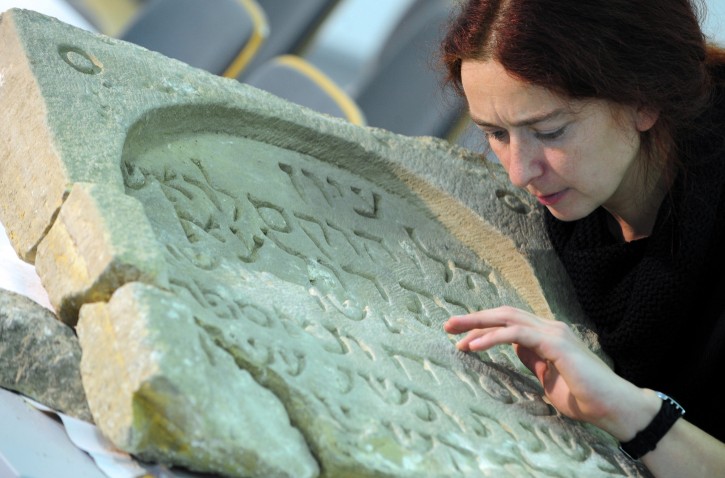 Effurt, Germany – A tombstone discovered in Germany dating back to the thirteenth century this past January during a construction project holds the distinction of being the oldest surviving Jewish grave stone.
Effurt, Germany – A tombstone discovered in Germany dating back to the thirteenth century this past January during a construction project holds the distinction of being the oldest surviving Jewish grave stone.
Subscribe to our Daily Roundup Email
The marker, which dates back to the year 1259, was discovered in the central German city of Effurt, the capital city of Thuringia, located sixty two miles southwest of Leipzig. The tombstone bears the name “Frau Dolze” who is described as the daughter of “Herr Asher”. A total of fifty eight gravestones and gravestone fragments have been discovered in Erfurt, a town that was home to a significant Jewish community which was established in the late eleventh century and is seeking inclusion as a Unesco World Cultural Heritage Site.
Erfurt’s Jewish community was eradicated in 1349 during a series of pogroms, initiated on the pretext that Jews had poisoned the city’s wells. More than one hundred Jews were killed, in the attack. Any survivors were expelled and the Jewish quarter was burned down. While Jews resettled the city less than ten years later, all Jews were ordered out of Efurt in 1458 and the Jewish cemetery was destroyed, with many of its tombstones being recycled into building materials. Municipal barns and a large grain storehouse were built on the site of the cemetery which was located outside Erfurt’s Jewish quarter, at the Moritz Gate, which is now known as Grosse Ackerhofs Gasse.
Erfurt’s Old Synagogue, which was constructed in the eleventh century is considered to be the oldest synagogue that is still standing in Europe and is currently used as a museum. Among the items housed there is the Erfurt Treasure, a cache of coins, gold and jewelry that was hidden in the wall of a house during the 1349 pogroms and was discovered in 1998.
Online:
http://alte-synagoge.erfurt.de/jle/en/

The money they found in the shule should be returned to the Jewish Community. There were so many progroms in Germany in the medievil times. Over 100,000 Jews were killed by Peter the Hermit on his way to fight in the Crusades.Later, he and his followers were then killed by the Turks when he came to Turkey.
Yeah they should give reparation abt 1000 years later.
That is awesome. Look how well the letters are formed on the stone. When we think about our ancestors in medeival Germany and what they had to go through. Germany was always bad for the Jews. There was persecution and discrimination from the very beginning.
There goes the ludicrous theory of Ashkenazic Jews being descended from the Khazars, when the oldest gravestone is indeed in Ashkenaz!!
It’s really too bad that Sephardic history is excluded from “Jewish history”
The Tombstone of Shmuel bar Shealtiel ha Nasi, Monzon de Campos, Spain,1097 is presently on display on in Toledo, Spain.
The earliest Jewish tombstone with a Latin inscription and discovered in Spain is that unearthed at Adra; it is of a Jewish girl, and dates back to the third century (Hübner, “Inscriptions Hispaniæ Latinæ,” p. 268, Berlin, 1869; Rios, “Hist.” i. 68).